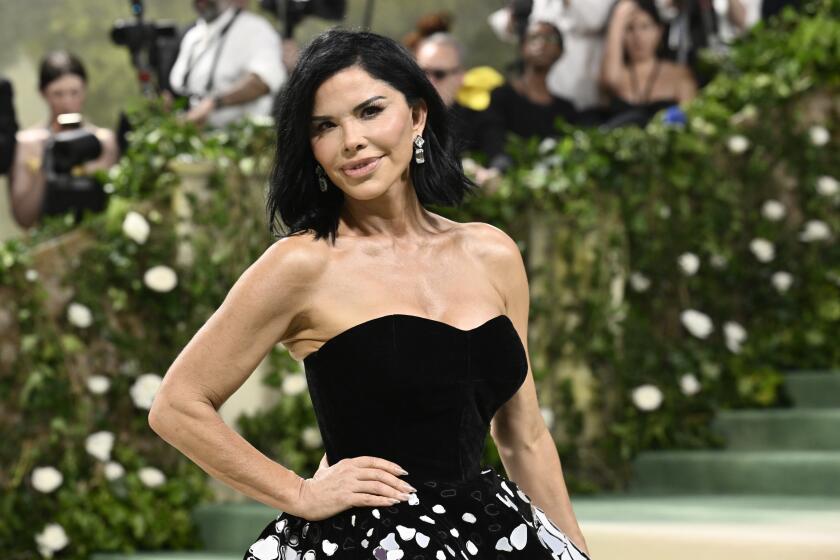Not Just for Kids: ‘Why We Broke Up’ details a teen romance
Why We Broke Up
A Novel
Daniel Handler, with illustrations by Maira Kalman
Little, Brown: 354 pp., $19.99, ages 15 and older
Most of us have been there, experiencing the unprecedented high of a first love followed by the debilitating low when it crumbles. But few of these tragic trajectories have been written about as poignantly as in “Why We Broke Up.” The young-adult debut from Daniel Handler, a bestselling author better known as Lemony Snicket, is an illustrated novel that is its own series of unfortunate events, chronicling a brief but intense teen relationship gone wrong.
Penned as an elaborate “Dear John” letter written by high school junior Min Green to her ex Ed Slaterton, “Why We Broke Up” doesn’t begin with words but an artfully rendered end paper that shows a baby blue delivery truck parked at the end of a driveway. The truck belongs to Min’s friend, who has driven her to Ed’s house to drop off a box containing all the mementos of their 38-day love affair. “Fragile,” reads the lid.
It’s ironic that this box, filled as it is with “the prizes and the debris of this relationship,” is the same shade and shape as a gift from Tiffany’s since it contains items of such negative, emotional value. But it’s equally unusual that Ed and Min even started to date to begin with. According to her friend, Min has “all the qualities Ed Slaterton looks for in his millions of girlfriends.… You have two legs.” Ed is a senior and co-captain of the basketball team. Min is a junior who’s greatest interest is old movies. Yet there was something between them — beyond hormones — that prompted the two to go out.
That something has its roots in the well-traveled, opposites-attract high school trope. In “Why We Broke Up,” it’s just told more creatively, with the benefit of hindsight and pictures. This deconstructed story about falling in love is illustrated, quite literally, with the artifacts that document their romance. Each chapter begins with a drawing of a single item of significance that is elaborated upon through text. The first objects to be so presented are the bottle caps for Scarpia’s extra bitter ale that Ed drank the night Min talked to him at a party after admiring his strong shoulders, arms and jawline. Min doesn’t drink beer. She does, however, see a lot of old movies, which, as the painting of a movie stub indicates, is where she takes Ed on their first date.
Those items are followed by the note Ed left in Min’s locker that scrawled, “I can’t stop thinking about you,” on lined note paper, the Hellman High School pennant Min was given to wave at basketball games as Ed’s official girlfriend and, eventually, a condom wrapper. Artist Maira Kalman’s full-color paintings of such mundane objects highlight the weighty sentimental attachments of the ordinary in the mind of an emotional high schooler, as do Handler’s words.
Few male writers could make a teenage-girl narrator in the throes of romantic desire and despair seem so credible, but Handler, who, on the jacket flap, says he was dumped at least three times in high school, has, apparently through experience, convincingly mined the psyche of the love struck, presenting the story in an elegant and humorous style that borrows some of the tricks he honed as Lemony Snicket.
Though fans of his “Series of Unfortunate Events” aren’t likely to see any direct similarities, especially in the story line, Handler demonstrates a continuing affection for run-on sentences and food novelties with “Why We Broke Up.” He takes an entire page to describe the ludicrous course of events in a typical high school day as Min counts the minutes until she’s reunited with Ed. He describes the chestnuts the two were supposed to cook for Thanksgiving as tasting “like someone chewed up a tree branch and then French-kissed it into your mouth.”
It’s easy to predict how Handler’s story will conclude from the book’s few pages. It’s more difficult to take such an everyday tragedy with a predictable ending and elevate it to an end point of enduring, emotionally effective art.
More to Read
Sign up for our Book Club newsletter
Get the latest news, events and more from the Los Angeles Times Book Club, and help us get L.A. reading and talking.
You may occasionally receive promotional content from the Los Angeles Times.









